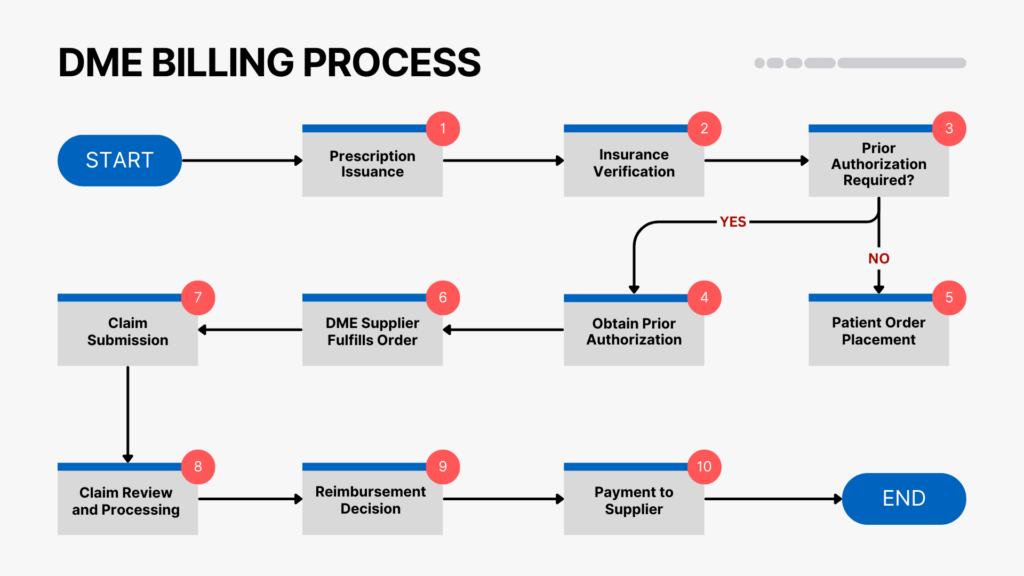Introduction
Durable Medical Equipment (DME) billing is a crucial aspect of healthcare administration that ensures patients receive necessary medical equipment while providers and suppliers are properly reimbursed. This comprehensive guide will walk you through the DME billing process, introduce key players, and highlight best practices.
What is Durable Medical Equipment (DME)?
Before diving into the billing process, let’s clarify what DME includes:
- Durable medical equipment is reusable medical equipment designed for long-term use
- Examples include wheelchairs, hospital beds, oxygen equipment, and CPAP machines
- DME is prescribed by healthcare providers for use in the patient’s home
Key Players in DME Billing
Several entities are involved in the DME billing process:
- Patients
- Prescribing Physicians
- DME Suppliers
- Insurance Companies
- Medicare/Medicaid
- Billing Specialists
The DME Billing Process: From Prescription to Reimbursement
- Prescription and Documentation
- Verification of Coverage
- Prior Authorization
- Equipment Delivery
- Claim Submission
- Claim Processing
- Payment or Denial
- Follow-up and Appeals

Challenges in DME Billing
To ensure smooth DME billing operations:
- Stay updated on billing guidelines and regulations
- Implement robust documentation processes
- Utilize specialized DME billing software
- Provide ongoing training for billing staff
- Conduct regular internal audits
Conclusion
Understanding the DME billing process is essential for healthcare providers, suppliers, and administrators to ensure smooth operations and proper reimbursement. By following best practices and staying informed about industry changes, you can navigate the complexities of DME billing successfully.
External Links:
- Centers for Medicare & Medicaid Services (CMS) DME Center: https://www.cms.gov/Center/Provider-Type/Durable-Medical-Equipment-DME-Center
- American Association for Homecare: https://www.aahomecare.org/



